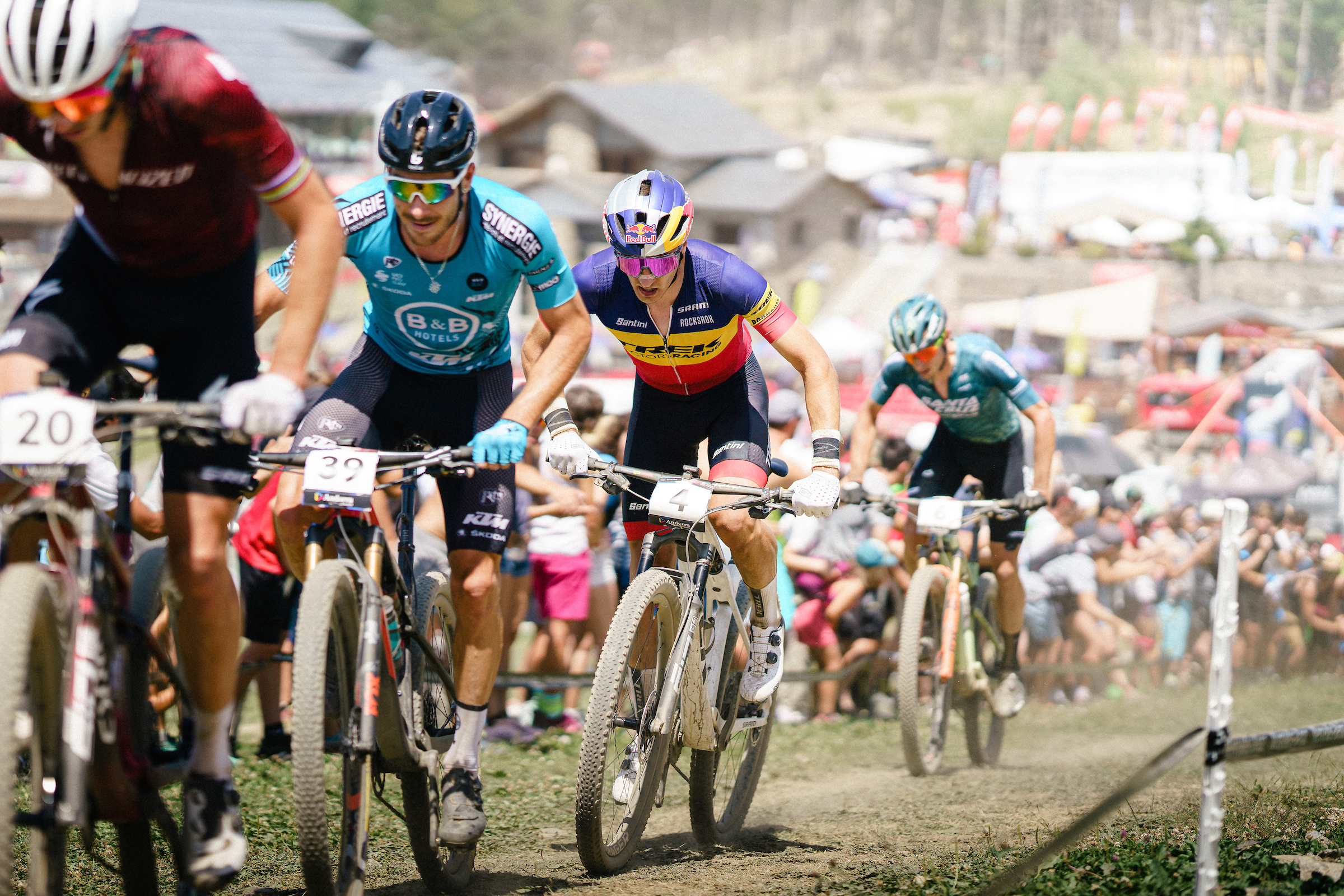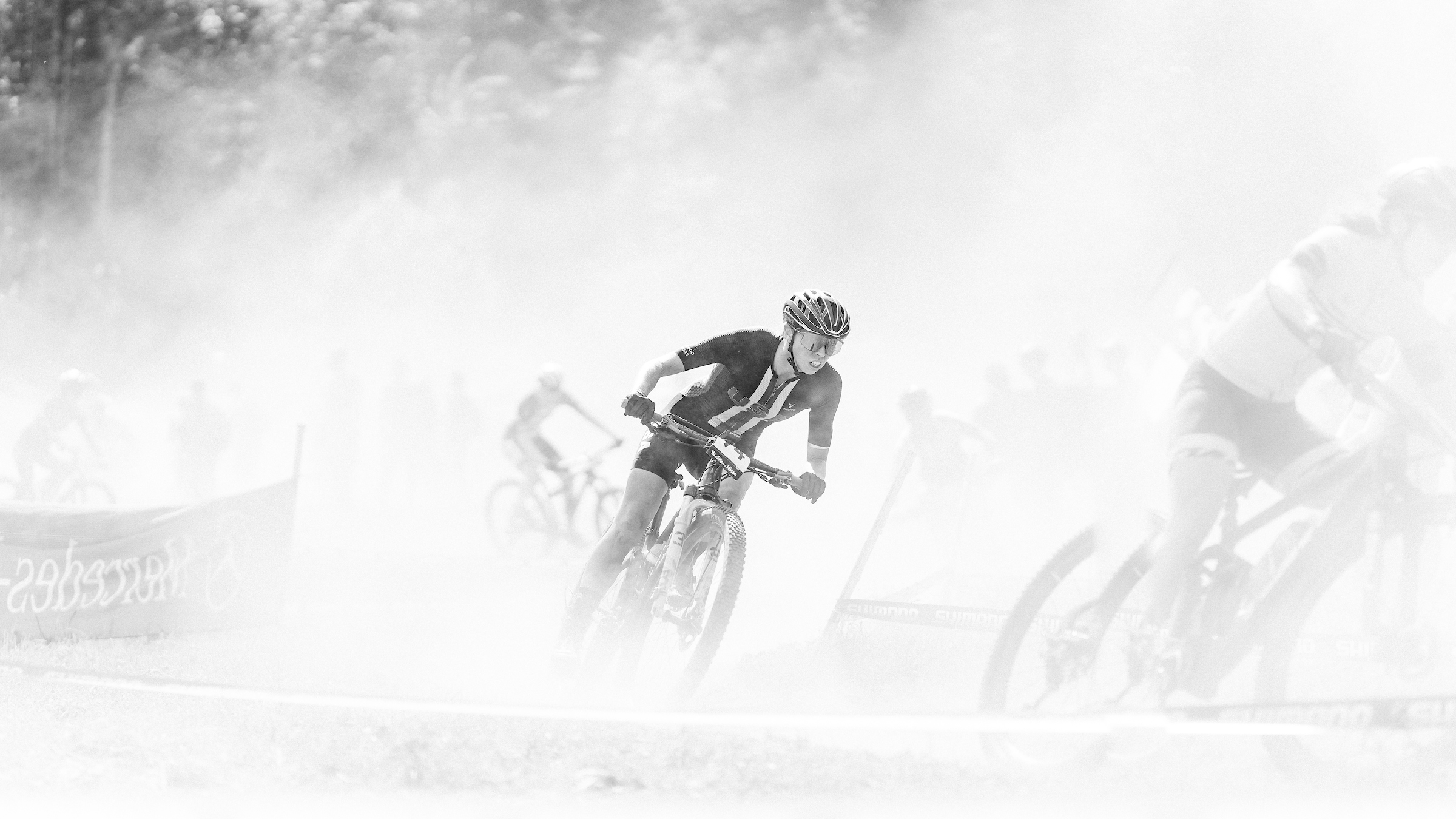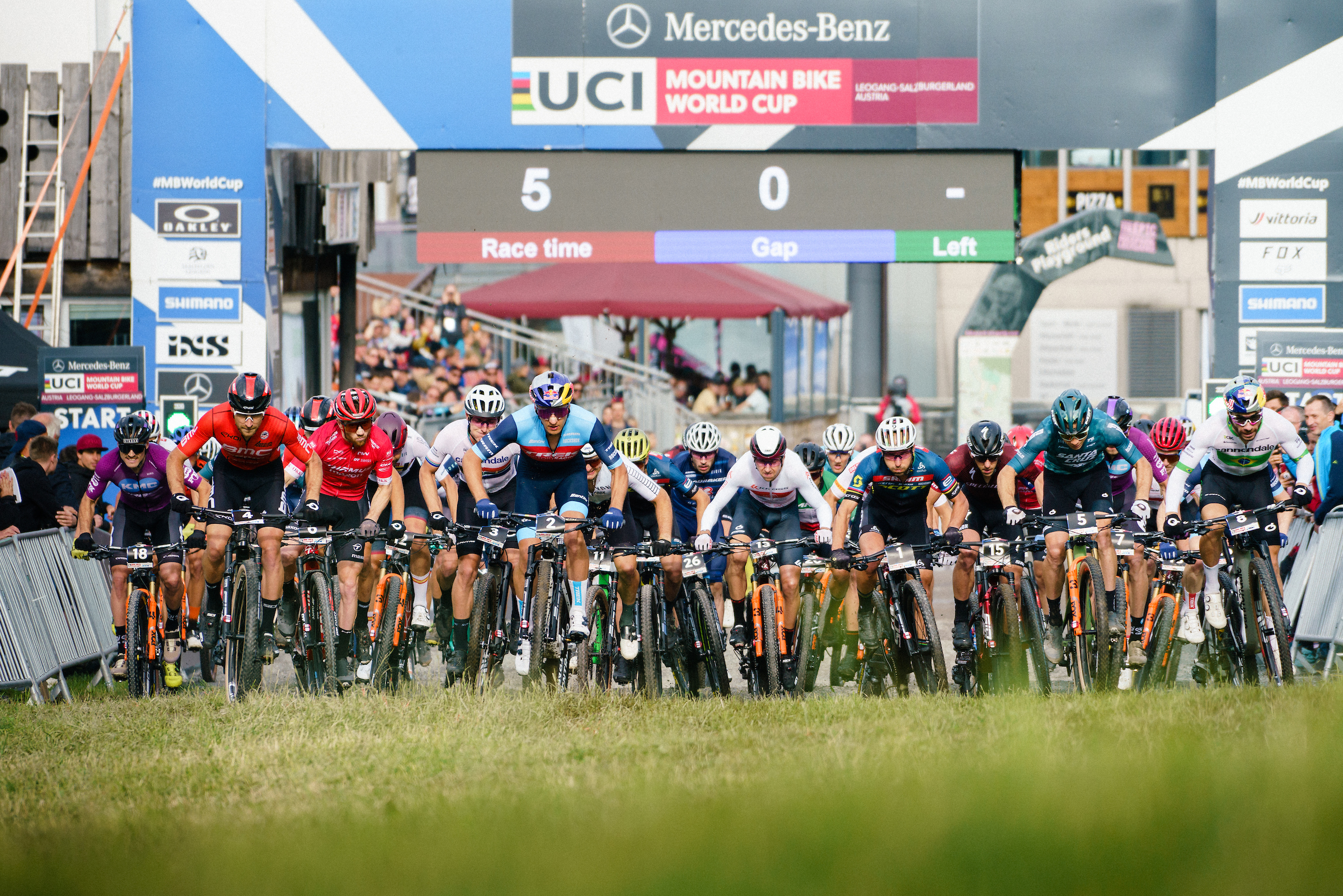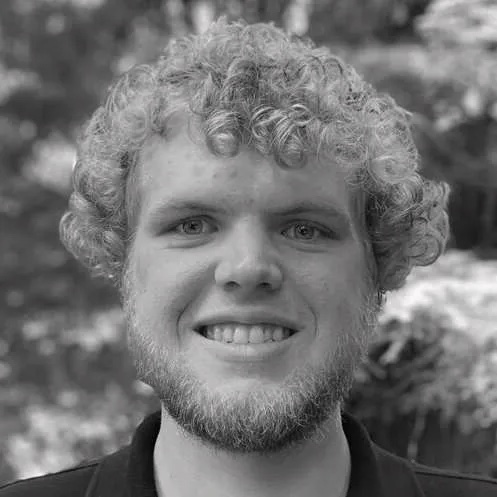The 2023 UCI Mountain Bike Cross-Country World Cup kicks off this weekend in Nové Město na Moravě in the Czech Republic, and we are excited to cover all the action, from racing to tech. That includes previews for each round (linked above), but given that Escape Collective has primarily stuck to the pavement thus far, we’ll start with a primer on cross-country mountain biking and how the season is structured.
WTF is XCO?
World Cup-level cross-country mountain biking now consists of three sub-disciplines: short track (XCC), cross-country Olympic (XCO), and cross-country marathon (XCM), which is receiving World Cup designation for the first time this year. We should also mention that there is cross-country eliminator racing (XCE), which consists of heat-based racing on short, often urban courses. XCE has a World Cup series, however it is not included in the UCI Mountain Bike World Series and is considered a pretty niche race discipline. DH is what you think: downhill.

How it works
Until roughly 2012, cross-country racing was more synonymous with what is now considered marathon racing, with courses taking riders deep into the woods on natural trails and dirt roads, and finish times were closer to three hours. The London Olympics were one of the first instances where courses began to change. The laps become shorter and more manicured, with punchy climbs and technical man-made features such as rock gardens and jumps. This changed the demands of racing to better suit explosive riders with solid technical skills and also allowed for more cameras and broadcast equipment alongside the course, leading to better broadcast viewing. In-person fans can also follow along more easily, watching the riders whizz by 5-6 times over the course of the race, and sometimes seeing the riders twice in one lap from different vantage points.

Today, XCO races consist of 5-6 laps and feature finish times of about 1 hour and 20 minutes. In this respect, and in terms of racing dynamics and strategy, XCO is fairly similar to cyclocross: lots of surges and attacks, a premium on tactical positioning, and mistakes are relentlessly punished.
XCC has been a staple of the MTB World Cup since 2018 and has had a rainbow jersey since 2021. The XCC race takes place on Friday evening on a short lap of just about 1 kilometer, much like a criterium (with berms though). Racers go round and round on this short circuit for only about 20 minutes for a short burst of exciting and tactical racing. Racers’ results in the XCC dictate their start grid position for the XCO, so a solid result can be helpful in getting a spot near the front of the pack come Sunday. That’s vital on XCO courses which can be prone to bottlenecks at the beginning of races.
As mentioned above, Nové Město will play host to the first-ever XCM event, with a 120km course and racing for amateurs as well. There will also be XCM World Cup races at the Finale Ligure, Les Gets, and Snowshoe stops on the calendar this year. In general, marathon races range from 50-100 miles and take riders through remote locations. Popular examples of marathon races include the Cape Epic (an MTB stage race) and the Leadville Trail 100 in Colorado.
Those and other races are big draws for amateur competitors especially, but it is yet to be seen how popular marathon racing will become at the World Cup level. Marathon racing specialists exist and may base their seasons around the World Cup stops. However, for both fitness and logistical reasons it will be difficult for riders to compete in both the XCM and XCO events.
What to watch for
XCO races begin with riders staged in a grid formation. Again, this bit is identical to cyclocross. A rider’s series ranking (or XCC performance from Friday) dictates where on the grid they start. With men’s and women’s fields of 50, 75, or even 100 riders, the farther back you start, the harder it gets to contest for a podium position.
Races start in an all-out sprint, either on pavement or a smoother off-road surface such as dirt, gravel, or grass. In nearly every World Cup XCO race, the riders take on a start lap which is a shortened version of the regular circuit. Start laps string out the field more naturally and can help avoid bottlenecks straight after the start.
Each rider will have different preferences on where they want to end up immediately after the start. The first rider into a singletrack or technical section is said to have gotten the “holeshot” and will have the best vision of what’s ahead and can dictate the pace. If a rider wants to be competitive in the race, the closer the front the better to avoid bottlenecks and other mishaps.

XCO courses consist of short, punchy, steep climbs that send riders’ heart rates past threshold. A climb of more than three minutes would be considered exceptionally long for a modern XCO course. The climbs (which can be quite technical on their own) are interspersed by downhills and technical sections – think rocks, roots, jumps, drops, and corners. The name of the game in XCO is being able to spike your heart rate and power on the climbs, while being able to navigate the technical downhills while your heart rate (slightly) recovers.
A misconception is that XC riders are not technically skilled. That is absolutely not the case. Check out the rock drop on the Tokyo Olympics course that Mathieu van der Poel tumbled off or the infamous “La Beatrice” rock garden descent at Mont-Sainte-Anne to see just how gnarly these courses are.

World Cup courses feature two tech/feed zones per lap where soigneurs and mechanics can assist riders with bottle and gel handups as well as technical assistance such as wheel changes. It is illegal to receive assistance outside of these designated zones.
Team tactics are not often seen in XCO racing. As is the case in cyclocross, it’s an every-rider-for-themself dynamic. Some riders may prefer to hit the front early and try to go solo, but it’s more common to see small groups of 3-5 riders form during the first couple of laps. These riders will try to chip away at each other on each climb and descent. I like to say that an XCO race is like the final 30 minutes of a Spring Classic without the hours of waiting beforehand.

Mountain biking has been organized into an official World Cup since 1990, the same year as the inaugural MTB World Championships in Durango, Colorado. While the World Cup often visits North America and Australia, it is absolutely a European-centric series. Asia and South America often miss out on the “World” Cup, though there was a stop in Brazil last year.
World Cup wins are considered one of the most prestigious race wins a mountain biker can attain, akin to a Grand Tour stage win. At the end of the season, the World Cup overall champions are crowned based on points accumulated at each event throughout the season. This is also considered prestigious and shows which riders are the most consistent. Above those titles are the World Championship jersey and the Olympics.

Other things to know
Speaking of the Olympics, we will begin to hear more about the Olympic qualification process for Paris 2024, which opened last year and runs through May 26, 2024. A nation’s top three ranked athletes’ UCI points are added together to determine how many spots in the Olympic MTB race a nation receives. Then it’s up to the individual federations to decide who they will send to the race.
You may notice references to the UCI Mountain Bike World Series. The individual disciplines are still referred to as the World Cup (e.g. UCI Cross-Country World Cup), but World Series is used when referring to all of the disciplines (XC, DH, and Enduro) collectively.
How to watch
The elite XCC and XCO races will be streamed on Warner Brothers Discovery platform GCN+ as well as Eurosport and discovery+. New for this year, the U23 XCO races will be streamed for free on the UCI Mountain Bike World Series YouTube channel, as well as the paid services mentioned above.
Experienced sports broadcaster Kate Mason will be the lead anchor for each race, with Ric McLaughlin serving as lead commentator joined by 1996 Olympic Champion Bart Brentjnes. Enduro racer Josh Carlson and Eurosport presenter Hayley Edmonds will complete the team as field reporters. We’ll be posting previews for every World Cup XC round, starting with Nové Město, with exact start times for each field.
What did you think of this story?

